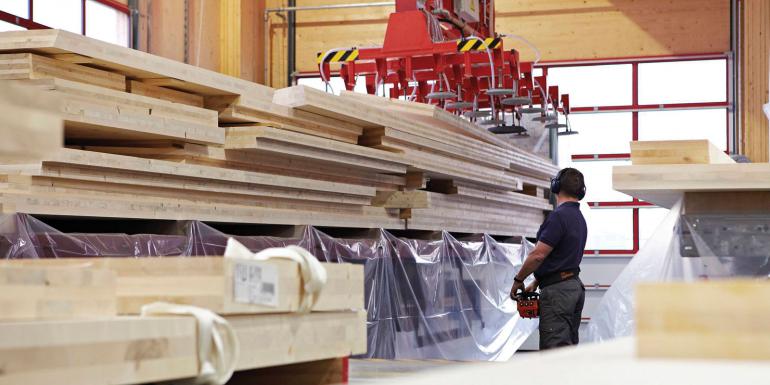Industry opinion

We need all options on the table to enable green developments says Stora Enso’s R&D Director Matthew Linegar
Developers are being asked to resolve a UK housing policy contradiction. On one hand, the UK desperately needs more new homes to address long-term systemic shortages. On the other, the environmental impact of buildings is under the spotlight and green standards are likely to get stricter. The problem is that standard building design practices are not aligned with environmental requirements. So as it stands we can either build our way out of the housing crisis while deepening the environmental one, or address climate change while hampering efforts to build desperately needed new homes.
Then there is the fact that the upcoming tightening of the combustible cladding ban, introduced in December 2018, will likely remove one of the most promising tools available to resolve this contradiction – engineered timber.
According to the World Green Building Council, of the global emissions that buildings account for, 28% are from operation and 11% from embodied carbon from the upfront materials and construction. Mainstream construction materials are notably carbon intensive. The challenge for developers to deliver high volumes of new homes – affordably – while decarbonising, is huge.
Engineered timber can be thought of as combining the environmental performance of a renewable resource with the performance characteristics of man-made materials. So long as it is harvested strictly from sustainably managed forests, it is possible to plant more trees than are used. Crucially, the trees remove carbon from the atmosphere as they grow and store it away, locking the carbon in the timber for the lifetime of the material. This means that as long as an engineered timber building stands, the material is in effect carbon negative.
But can engineered timber structures provide comparable performance to traditional construction methods? Emphatically yes – provided they are designed correctly. One of the most prominent engineered timber materials, cross-laminated timber (CLT), is fully capable of supporting high-rise structures such as apartment complexes or office buildings. What’s more, CLT is prefabricated and supports the growing need for more off-site construction to speed up developments. The lighter-weight nature of CLT means fewer site deliveries, reducing costs and the environmental impact. It also means that more units can be built on sites where weight is an issue, such as those above tunnels or with poor ground quality, and it creates opportunities to create more value from existing buildings through vertical extensions.
The elephant in the room
It is understandable that there are concerns over fire safety – after all, wood is a combustible material. Developers must appoint competent designers who fully understand the performance of combustible and charring materials to ensure the design and construction meets or exceeds the requirements of the building regulations. Of course, building design and our knowledge is not static and the industry has a responsibility to invest in this continuous development of knowledge and best practice.
However, is it really right to extend the combustible cladding ban to 11m, which further limits the application of CLT? The combustible cladding ban has already caused a reduction in the available market for engineered timber, even though the ban only relates to the external wall construction of certain residential-type buildings. Perception is clearly stronger than reality. The threshold reduction from 18m to 11m sends the message to market that engineered timber is off the table. We should expect more of the industry, we should invest in developing knowledge and competency across the sector, and we should hold developers to high standards. We should take an evidence-led approach.
I would argue that the UK is an anomaly as countries around the world scale-up their use of engineered timber. At a time of pressing housing and environmental crises, can we afford to remove the industry’s only scalable, renewable and carbon-negative option for a structural material? Surely, in order to treat the climate crisis with the seriousness it deserves, all options should be on the table.
Visit storaenso.com/







